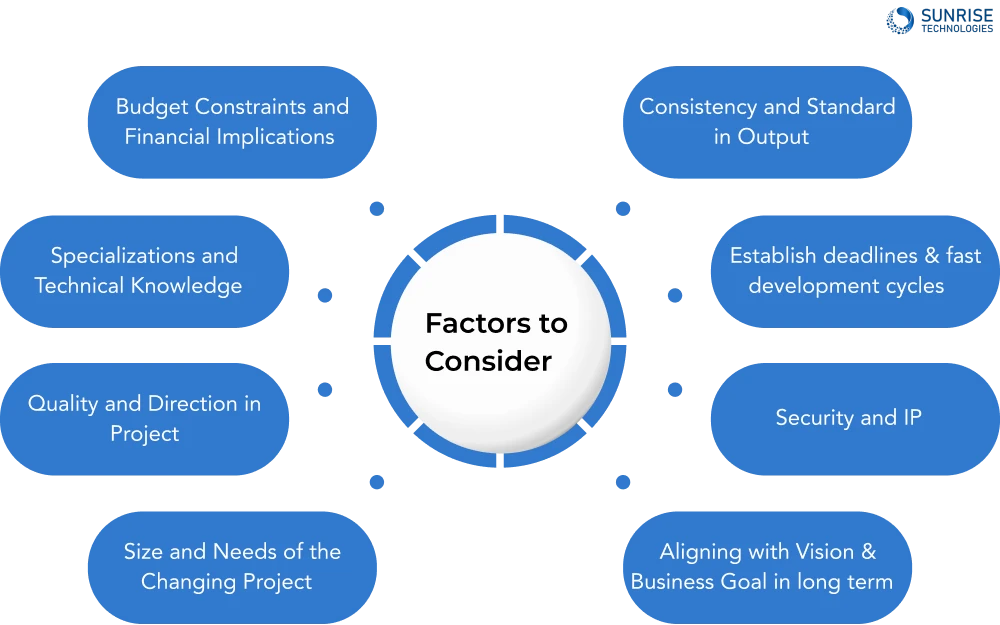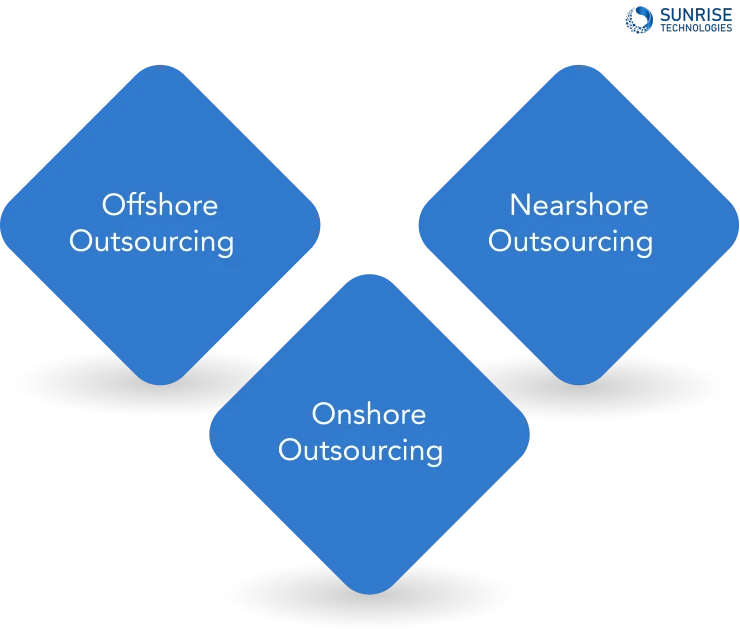
Connect With Us
Let’s create something extraordinary. Connect with Sunrise Technologies today!
You decide to make a new application for your business. You will have two options. Develop it in-house. Or outsource it from a vendor. An external vendor. Fast development comes from the best approach. It ensures app delivery within the deadline. And, within budget. But the cost might increase if the wrong option is chosen. It can also increase problems. It can delay the process. Finally, your project could slow down. This article is a detailed guideline. It shows a comparison between in-house vs outsourced software development.

Evaluate the financial aspects. Then compare the cost of an in-house team. Compare this with an outsourcing expense. Direct costs like salaries are included. Also, in-house software development team infrastructure. Along with that contract-based outsourcing costs.
Determine whether your organization has technical skills. Be it an important skill or providing access. Access to special talents. It is not available in-house.
Consider managerial control level. Along with that, exercising supervision. It varies between partners of in-house and outsourced.
Evaluate the ability to measure team size. Plus, adapt to changing project needs. This factor offers great flexibility in outsourcing.
Ensure that your final product meets quality standards. It can be through direct in-house control. Or it can be through established processes. It is through a team of outsources.

The impact on development speed needs consideration. Also, establish a meeting of deadlines in the market. It is done by measuring in-house team efficiency. It is measured against possible quick turnaround. That too for an outsourcing team.
Evaluate the risk of Intellectual Property (IP) protection. It maintains data security. It is important when dealing with information. The information can be proprietary and sensitive.
Ensure that your choice matches with the organization’s objectives. The objectives need to be long-term. It can be creating internal capabilities. Or it can be grasping expertise. Expertise is needed externally for a particular project.

It involves collaborating with the software development team. They might be in a separate nation. Offshore Outsourcing is often chosen as an affordable option. It can evaluate the pool of talent.
Organizer partners with software development providers. It is in nearshore outsourcing. It can be in a neighboring country. This approach eases communication. It also facilitates cultural alignment.
It is also called domestic outsourcing. It means working with the team on software development. The team can be of the same country as the client. Higher costs might be involved. It has cultural compatibility benefits. It also offers closeness.
Now you know the comparison of in-house and outsourced development. So now, you can choose on your own. By making a better decision. Make sure that your requirement matches with your decision. Requirements of your project. Be it timeline or budget. If not, it can create an impact. Impact on the efficiency of the project. Along with the costs associated with it.
You cannot choose with this comprehensive guide. Even now. Do not worry. We, Sunrise Technologies, are at your aid. We are a leading software consulting company headquartered in Australia. Whether you’re seeking expert guidance or looking to outsource your development projects, we’re here to assist you. Share your requirements with us, and our team of seasoned professionals will work closely with you to tailor the perfect solution to your needs
Sam is a chartered professional engineer with over 15 years of extensive experience in the software technology space. Over the years, Sam has held the position of Chief Technology Consultant for tech companies both in Australia and abroad before establishing his own software consulting firm in Sydney, Australia. In his current role, he manages a large team of developers and engineers across Australia and internationally, dedicated to delivering the best in software technology.
Let’s create something extraordinary. Connect with Sunrise Technologies today!

MLC Centre, 19-29 Martin Place, Sydney, Australia 2000

56 Palmerston St, Perth WA 6000, Australia 2000

14 Mason Street , Melbourne, VIC - 3175, Australia 2000

80 Ann, Brisbane, QLD-4000, Australia 2000

Level 7, 143, MGR Main Rd, Perungudi, Chennai - 600096, India

Binary Tower, 20th Floor, Office Number 96, Business Bay, Dubai, UAE
You cannot copy content of this page